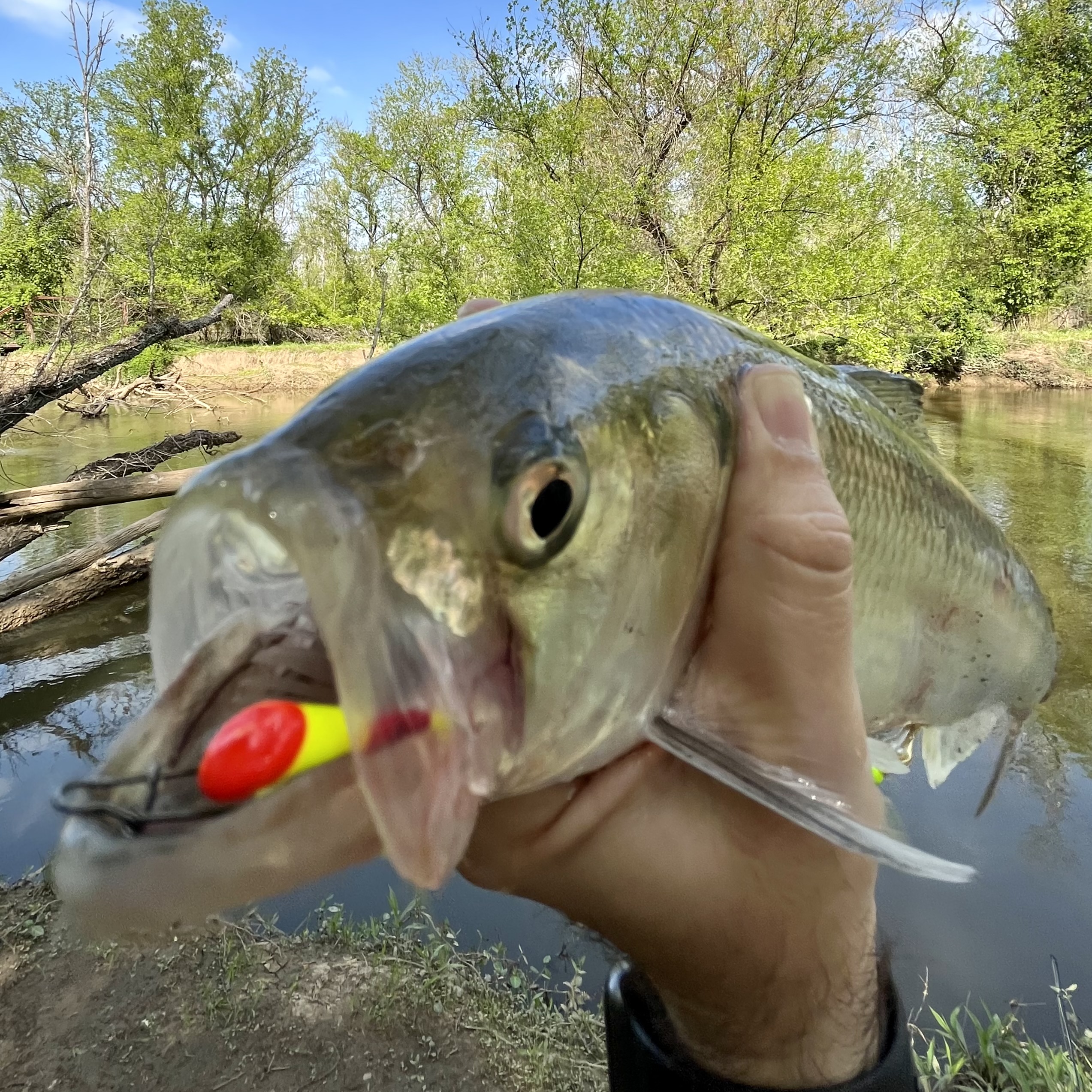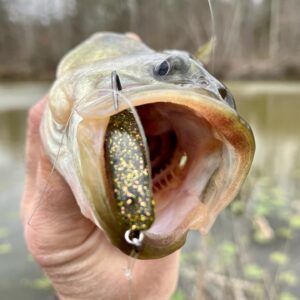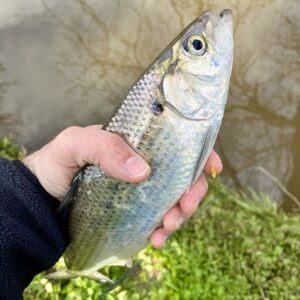For diehard anglers in the Chesapeake region, the transition from late-winter to spring is marked by the spawning runs of yellow and white perch—usually the first excitement of the year. And then….then there’s shad. Both the Hickory and American spring shad runs are, perhaps, the most thrilling early-season angling that we can hook into. Known as the “poor man’s tarpon” for their aggressive takes and excellent fight on light tackle, both species of shad offer serious anglers the opportunity to play a frisky fish that takes skill, patience, and informed execution to land. Seeking this beautiful, sleek anadromous fish can be fruitful or frustrating. You simply have to intercept them at the right time, place, and conditions in order to have a successful outing. I should know. It took me no less than five trips this spring to track them down. Here’s how.
Timing is everything. The shad runs begin to occur as early as late-March, but don’t be surprised if you come home empty handed during the last week of this month. But by mid-April, air temperatures (and water) begin the uptick into the mid-50sF and, if we’re lucky, low-60sF, which begins to trigger fish activity. In popular shad fishing locations, the first anglers of the season begin to arrive to try their hand at landing the first shad, usually Hickory, of the season. And with some success.
Finally, when the dogwoods bloom and we see pops of green foliage throughout the region, the shad runs are fully turned on, with Hickory and American shad making their way into the upper reaches of tributaries to spawn. Overall, this is the best time of year to catch them while you can because the run subsides by mid-May. Game over until next year. Coincide this information with ideal weather conditions—settled and during or after a slight warming trend. Avoid fishing directly after a cold front.

Location, location. Shad do not run in every tributary of the Chesapeake Bay. There are traditional hotspots and you’ll want to target these for a legitimate shot. Shad congregate in droves during the run at popular holes such as Flectcher’s Cove on the Potomac River, various locations along the upper Patuxent River, upper Choptank River, lower Susquehanna River, and several other Upper Bay tributaries. Thus, angling pressure intensifies at these locations during the six or so weeks of the run, which is usually a bank fishing affair. My preference is to research and visit your target locations during off-peak hours—usually mornings during mid-week days, when most folks are at work. I try to avoid evenings and weekends, as casting among dozens of other anglers, side-by-side, is not relaxing, nor peaceful.
Tackle and lures. It’s a fairly simple game in terms of what to throw at shad. Though they’re somewhat finnicky in that they’re generally not feeding during the spawn, it’s believed that the small lures of choice are bitten out of aggression. Thus, if you think you’ve located fish, you stand a good chance hooking into them by drifting and twitching lures repeatedly through the water column at varying depths, depending on where they are holding.
Many anglers choose a light spinning combo—perhaps a 6′ to 7′ light, fast action rod paired to a 2500 class reel—to play the shad. My combo pairs a St. Croix Triumph Spinning Rod TSR60MF to a Penn Battle IIIDX 2500. Set your drag to medium. You want the fish to take some line because their lower jaws are fragile. Too tight of a drag and you risk a breakoff. Plus, they like to run and it’s fun to play them as such.
The primary lure of choice is a tandem rig with a small shad dart of varying colors on top (usually a 1/32oz or 1/16oz), trailed by a small silver or gold spoon (I prefer a 1/16oz Johnson Silver Minnow or Nungesser shad spoons) about one foot below. It’s an easy rig to tie and I’ve included a picture of mine in the gallery below. Also, a small panfish lure can work wonders. I prefer a 1/16oz jighead (VMC Neon Moon Eye Jig) tipped with a 2″ plastic shad or stinger (I love Mr. Crappie Lightning Shads). I use 8# Seaguar Basix Flourocarbon for both the tandem rigs or as leader material when fishing the jig. On my outings, I had shad hit the top darts, the bottom spoons, and the jighead. Varying the lures and presentation was key to success.

Presentation and technique can be tricky to figure out at first. It took me several tries before I felt and developed a pattern at the locations I frequented. What I learned is that shad favored the exact line where the river current met still water. You’ll often see the river’s current moving in the middle section between banks and there will be places nearer shoreline where the current comes to a standstill. It’s this parallel intersection that shad favor.
Depth is also, obviously, important to keying in to their exact location. They’ll hold at varying depths, so its best to start your casts with a quick countdown of the lure (try 2 seconds, then 5, then 10, until you reach a foot off bottom) before beginning your retrieve.
The technique that landed a few nice American shad for me on these recent outings involved a cast into the middle of the current, quickly but gently reeling in slack line, letting the lure drift down current into about 5 to 7 feet of water, maintaining a tight line so the lure would arc back toward the bank where current met still water, and finally hooking into a fish. I would slightly twitch the rod to impart some action on the lures.
When the fish takes the lure, let the fish grab hold for about 2-3 seconds before you perform a light, sweeping horizontal hookset (not a hard, vertical largemouth bass hookset). If you’re hooking into the larger American shad, I recommend having a landing net at your side, preferably with a 36″ handle to reach down and out from the banks you’ll be fishing. On one outing, I didn’t have my net and several fish came off when attempting to “boat” them at the bank. With light lures come lighter gauge hooks, so these heavy American shad bent off the hook. Better to have a net.

Until next year, I’ll be remembering the 2022 shad run fondly. I made trips up and down the Patuxent River several times, from mid-March through early-May. I didn’t land a fish until the last week of April. Other reports—especially from Fletcher’s Cove on the Potomac—saw a very successful season that extended the entirety of this time. Hickory and American shad offer an exciting fishery. It’s also a protected fishery in Maryland, meaning catch and release only. Thankfully, releasing these fish so that they may swim the waters northward to spawn, then southward on their return to the ocean, will ensure that next year’s run is as exciting as the last.





